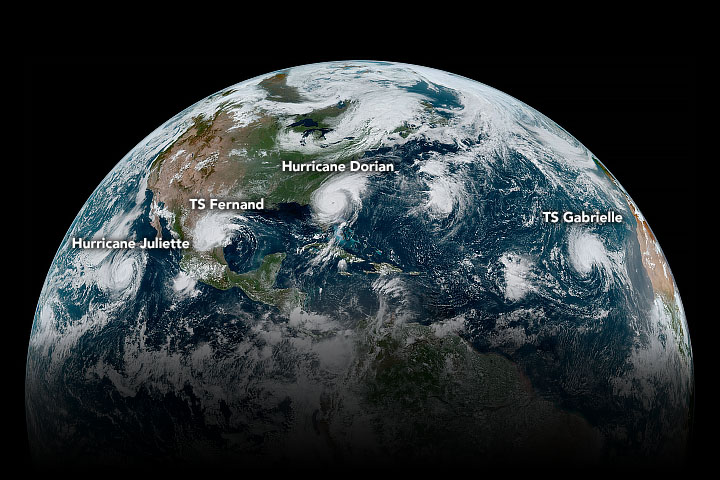Excerpt:
But what would change if we added a number to the hurricane scale?
A super-hurricane is brewing in the Atlantic Ocean in the opening pages of The Displacements, a novel by Bruce Holsinger published in 2022. “This is the one the climatologists have been warning us about for twenty years,” one character declares. Forty pages in, so-called Hurricane Luna makes a surprise turn for Miami and ends up demolishing Southern Florida with a wall of water, buckling skyscrapers, leveling wastewater plants, and filling the Everglades with contaminated silt. With 215-mile-per-hour winds, faster than a severe tornado, the fictional Luna is the world’s first Category 6 hurricane.
In the real world, Category 5 is synonymous with the biggest and baddest storms. But some U.S. scientists are making the case that it no longer captures the intensity of recent hurricanes. A paper published Monday in the Proceedings of the National Academy of Sciences lays out a framework for extending the current hurricane-rating system, the Saffir-Simpson scale, with a new category for storms that have winds topping 192 miles per hour. According to the study, the world has already seen storms that would qualify as Category 6s.
“We expected that climate change was going to make the winds of the most intense storms stronger,” said Michael Wehner, a coauthor of the paper and an extreme weather researcher at Lawrence Berkeley National Laboratory. “What we’ve demonstrated here is that, yeah, it’s already happening. We tried to put numbers on how much worse it’ll get…”
The idea of adding a Category 6 has surfaced several times in the last few decades, as storms like Hurricane Dorian in 2019 delivered some of the highest wind speeds on record (185 miles per hour) and flattened whole towns in the Bahamas. The current Category 5 designation refers to any tropical cyclone with wind speeds higher than 157 miles per hour.
The new threshold of 192 miles per hour for a Category 6 would have captured some of the strongest storms ever observed. Wehner and his coauthor James Kossin, a scientist at the climate nonprofit First Street Foundation, found that at least five storms have already reached this tier, and that all of them occurred in the last decade, a signal that a warming world is creating more monster storms. The most powerful of these gales, Hurricane Patricia, slammed into Mexico’s Pacific Coast in 2015 with winds that peaked at 215 miles per hour. By a stroke of good fortune, the storm hit a relatively unpopulated region, causing only six deaths. When another one of the most powerful storms, Typhoon Haiyan, struck the Philippines in 2013 with winds of 195 miles per hour, it killed more than 6,000 people, making it one of the deadliest disasters in modern history…
It’s becoming clear that flooding is the deadliest aspect of a hurricane. Storm surges account for roughly half of deaths from hurricanes in the United States, and flooding from heavy rain is responsible for more than a quarter, according to the study. By contrast, high winds are behind just 8 percent of deaths. Since the Saffir-Simpson scale is based solely on the speed of their winds, it doesn’t communicate the risks that people should be most concerned about, yet it’s the main thing people usually know about an oncoming storm.
“The point is, adding a Category 6 just amplifies the miscommunication of the greatest hurricane risks,” said Marshall Shepherd, a professor of atmospheric sciences at the University of Georgia…
Is a Category 6 hurricane possible? – YaleClimateConnections (10-02-2023):
Strong hurricanes are becoming more common, and they are likely to get more destructive as the climate warms. So how bad could they get?
Stronger hurricanes have some scientists calling for a new Category 6
– CBC News (02-05-2024):
As climate change supercharges some hurricanes, scientists are exploring how to better communicate their force to the public — including adding an extra category to reflect their power. A new peer-reviewed study examined storm data between 1980 and 2021 and found five storms that would have been classified as Category 6.









